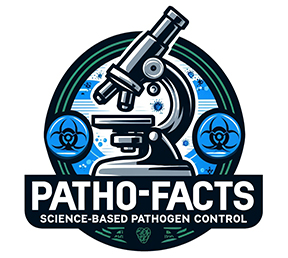
Your source for the science behind proper pathogen control
During the pandemic, we all learned that we didn’t know proper procedures for maintaining a safe and clean environment. There was a lot of false information, and many people were uneducated in proper procedures. Hopefully most of that is behind us but there still are many myths and also basic things you can do to minimize exposure to dangerous pathogens.
We would suggest you watch two of our recent Jancast videos to get up to speed on what we are talking about. Click here to watch #167 and #168 where we dive deep into science based facts about pathogens with the experts or scroll to the bottom of this page.
The following list is updated on a regualr basis, stay tuned and subscribed to Jancast to get notice when we push an update.
Cellphone – It goes with you everywhere — even into the bathroom. As a result, it could be up to 10 times dirtier than a toilet seat. In fact, it could have E. coli on it.
Remote Control – Everyone touches it — even the neighbor’s kid who picks their nose nonstop. And when it isn’t in your germy hands, it’s either on the floor or stuck between the sofa cushions — a cozy, dark home for mold and bacteria.
Computer Keyboard – You eat lunch over it at work. The kids log on at home and wipe their runny noses while they play their favorite game. The cat hops up for a nap after they leave the litter box. No surprise it’s covered in germs.
Dish Sponge – Surprise! It’s the dirtiest thing in your house. By a long shot. That makes sense: It’s wet, absorbent, and you rub food and dirt with it all the time.
Toothbrush Holder – How can this be? Your toothpaste kills germs, doesn’t it? Yes, but a lot of them stick to the bristles and drip onto the holder. This spot has one of the highest bacteria readings of anything you touch. Clean it often. One easy way: Remove the gunk, then stick it in the dishwasher.
Anything in the Office Breakroom – The microwave and refrigerator doors and the faucet are all covered in bacteria. The vending machine buttons aren’t that clean, either. And the damp, dark reservoir in your coffee maker could be full of yeast and mold.
Dog Toys – You’ve probably heard a dog’s mouth is cleaner than a human’s. Doubtful. It isn’t that Fido has fewer germs, they just has different ones. Every time they slobbers on Mr. Squeaky, they don’t just transfer bacteria, they create a sticky wet place for other germs to thrive.
Money – You grab it all the time with your germy hands. So do other people. Researchers found that most dollar bills are covered in 3,000 types of bacteria — everything from the germs that cause acne to microbes from people who lick their fingers when they count out bills.
The Laundry – Think a quick spin in the washer and dryer will get things clean? Maybe not. One study found that some nasty viruses, including rotavirus, which causes severe stomach troubles, made it through the spin cycle and the dryer. Wash things like underwear on hot, use bleach when you can, and don’t skimp on the drying time.
The ATM – People from anywhere and everywhere touch buttons on the cash machine. Scientists in New York City found microbes left behind from food like fish and chicken, bacteria from rotting plant and dairy products, and mold linked to spoiled baked goods.
Kitchen Towel– You don’t just dry your dishes and hands with it. You use it to clean off grimy little hands and faces or wipe up spills on dirty counters. The result: Your dish towel can be home to nasty things like salmonella or fecal bacteria.
Elevator buttons – The buttons inside elevators are touched by multiple users. Use a knuckle or object instead of fingertips to press them.
Shared equipment – Items like public computers, touchscreens, card machines are touched by many.
Pay close attention to surfaces that have high traffic flow or are used for multiple purposes throughout the day. The location and height of the surface can also indicate if it’s more likely to be touched by adults or children.
Thanks to WebMD and Perplexity.ai for some of this info- https://www.webmd.com/cold-and-flu/ss/slideshow-germiest-things
Watch the two Jancast episodes below and learn about –
Toilet plume
Sink splash plume
Carpet Stomping plume
Carry On/Carry Over contamination
Jancast # 168- What about toilet bloom and other science-based pathogen concerns?
Jancast # 167- Is the bathroom at your home safer than at work?

